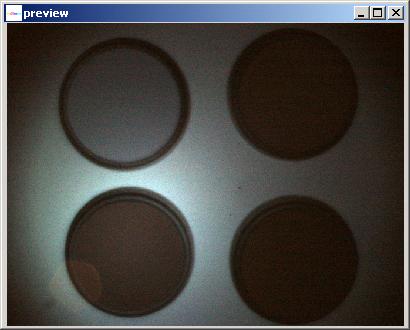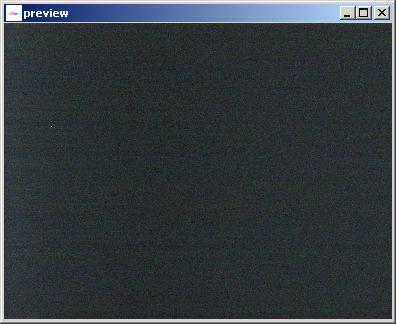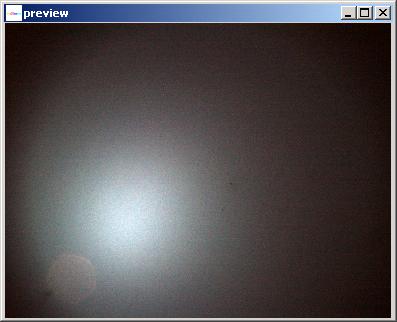
Example of a raw image:

Example of a black image:

Example of a white image:

Once the images are specified, the calibration is executed using the following formula.
The class CalibrateImage provides a tool for intensity calibration using 'black' and 'white' images.
Description: This class is used for calibrating raw image values
using black and white reference images. The callibration proccess will
take take 3 images, a black image (e.g., taken with the camera lens cap
on), a white image (e.g., an image of a perfect white background with
100% reflectivity), and the image that needs callibration. If no black
image is specified, the black is assumed to be 0 everywhere. The dialog
for choosing the three image files and vieweing each file is shown below.
Example
of a raw image:
Example of a
black image:
Example of a
white image:
Once the
images are specified, the calibration is executed using the following
formula.
calibrated pix[i, j] = { 1 if original pix[i, j] >= white pix[i, j],
0 if original pix[i, j] = black pix[i, j],
(original pix[i, j] - black pix[i, j]) / (white
pix[i, j] - black pix[i, j]) else;
This will result in a calibrated image with values between 0 and 1. The
execution is triggered by clicking the buttom "Calibrate".After previewing the calibrated image (button 'Preview'), a user can save the calibrated image (button 'Save') or apply it to the main frame for further processing (button 'Apply'). The dialog is closed with the button 'Close'.
Authors: Rob Kooper, T.J. Alumbaugh, Peter Bajcsy.